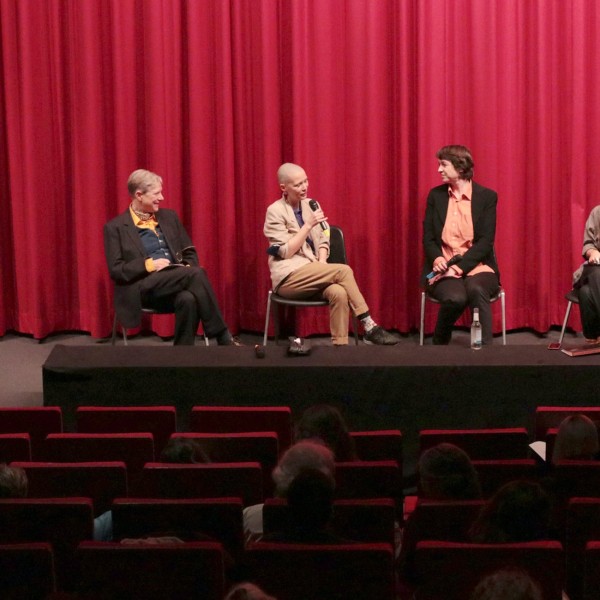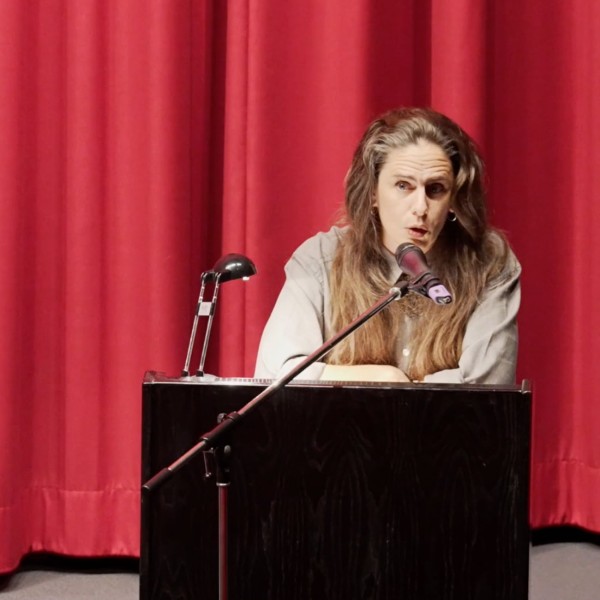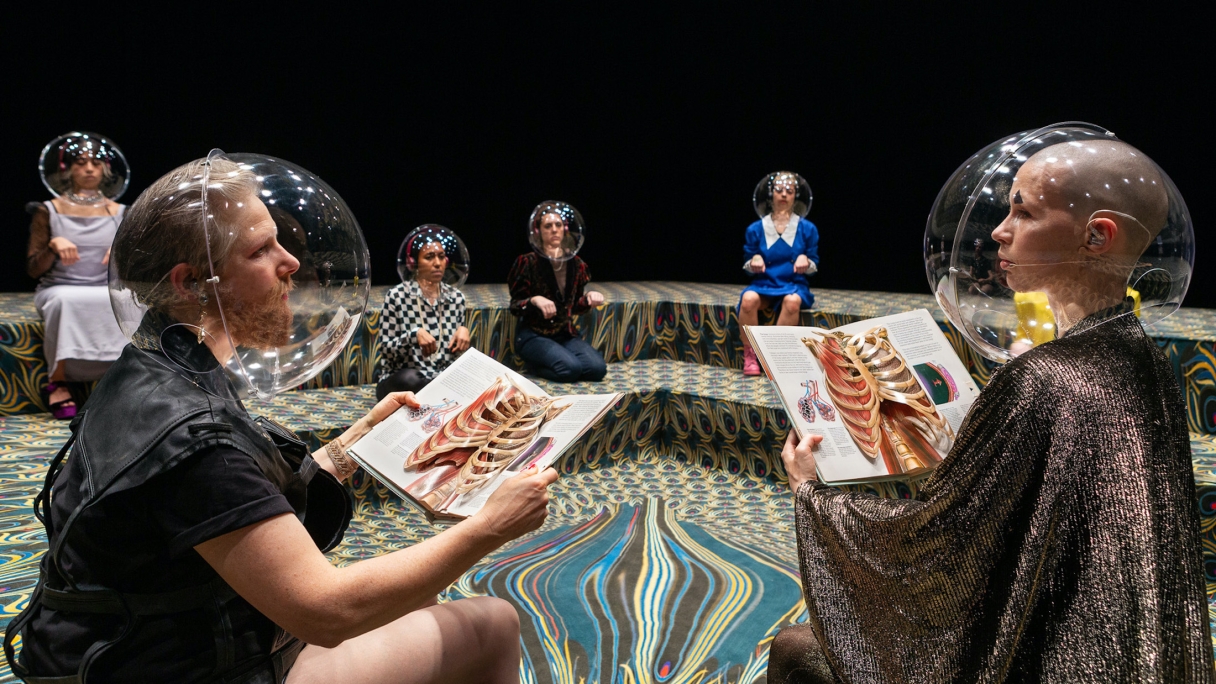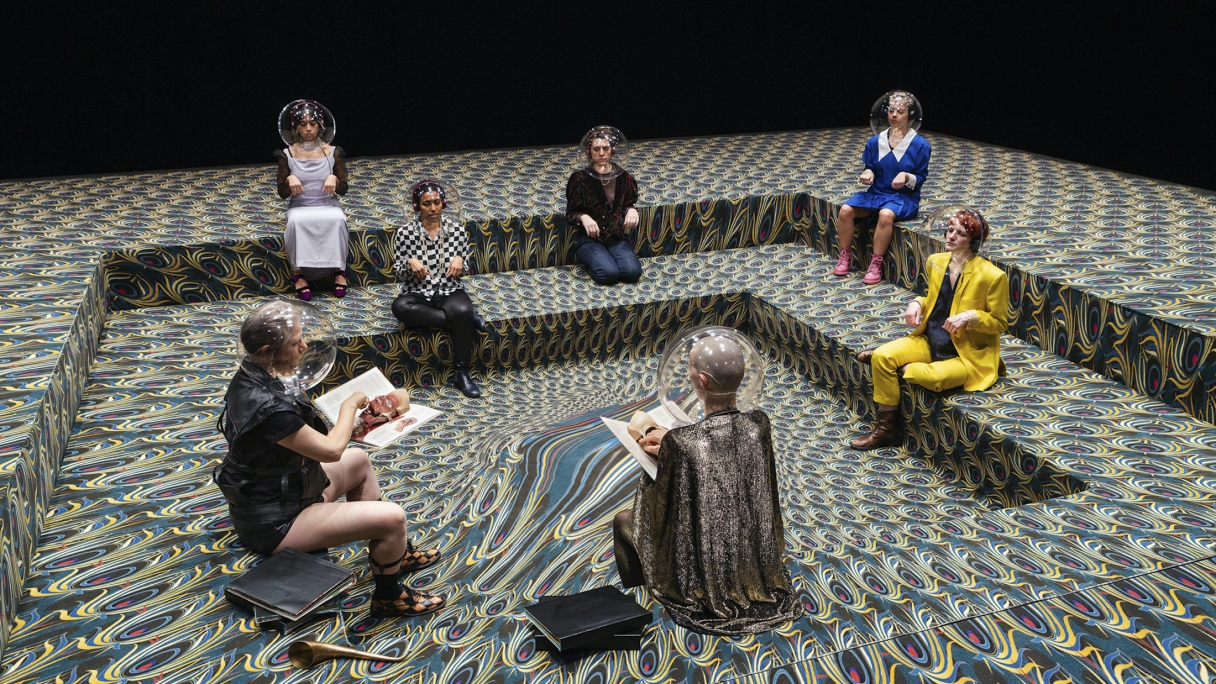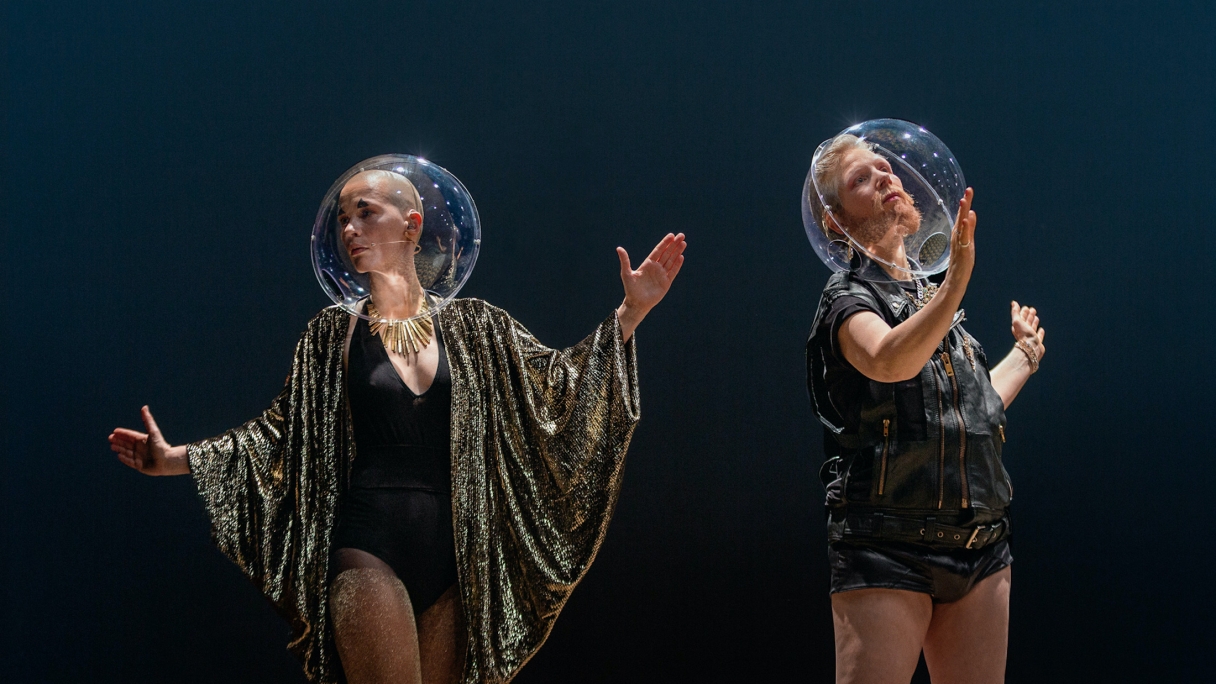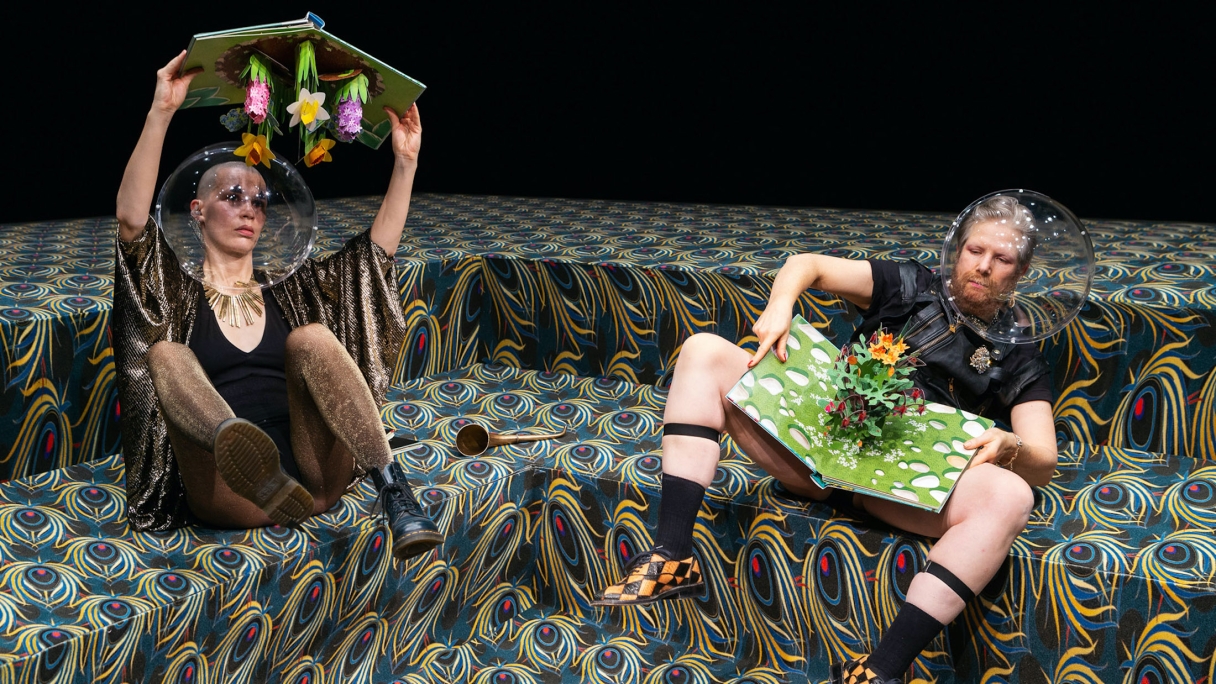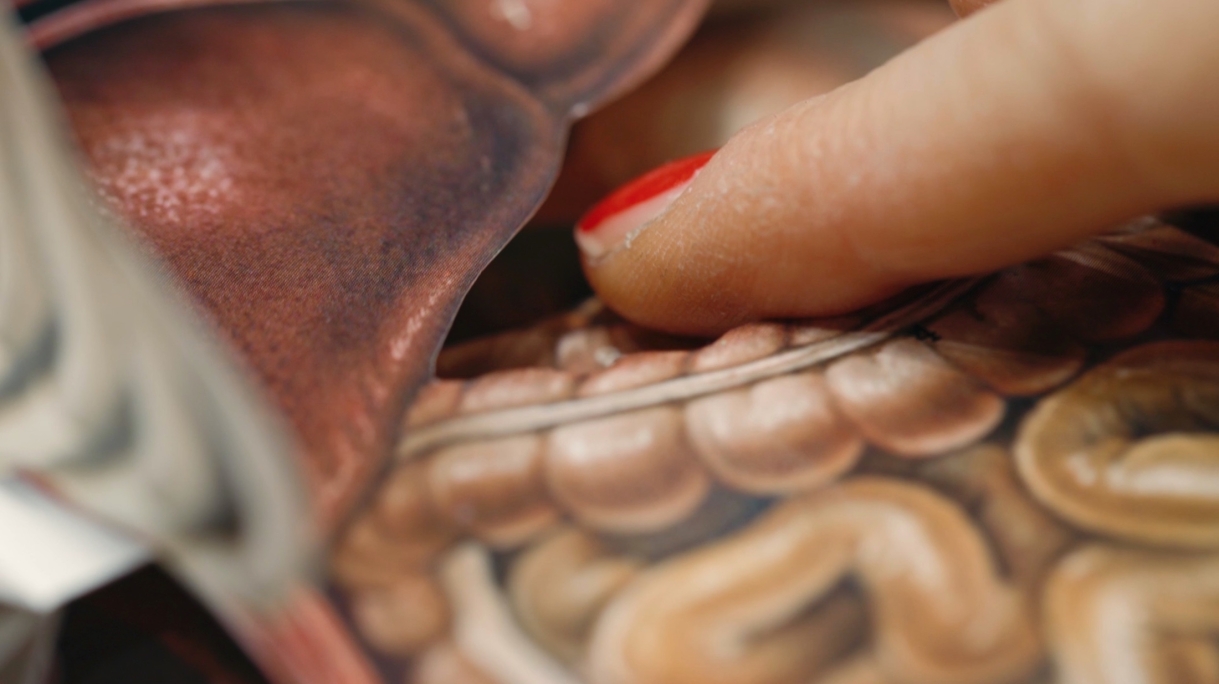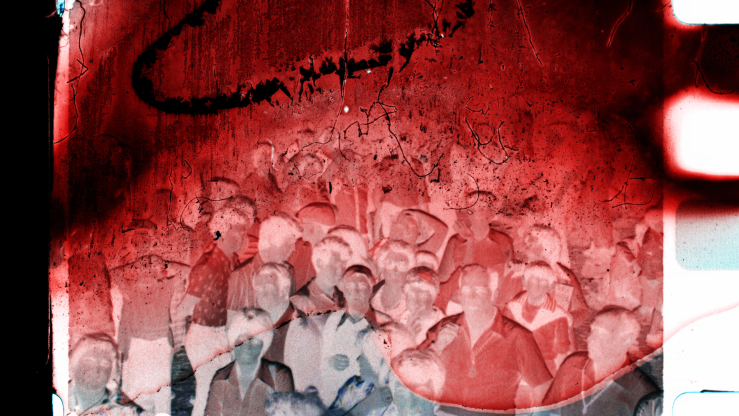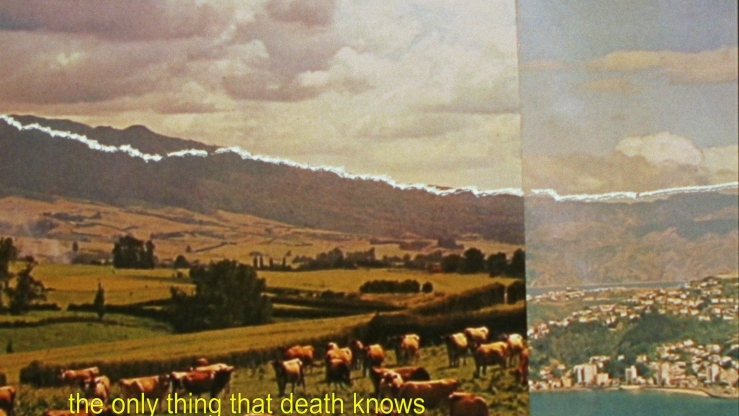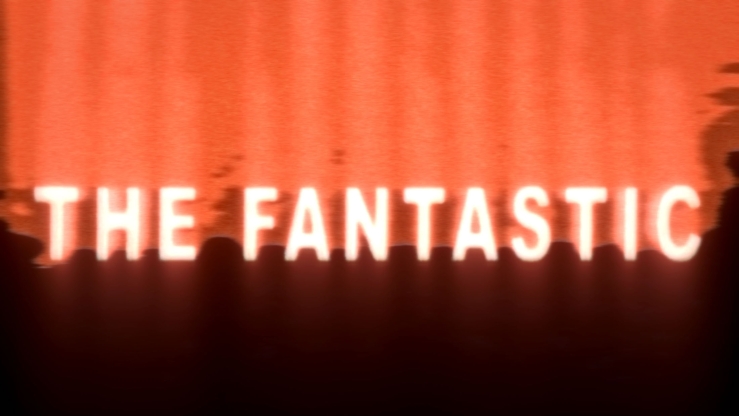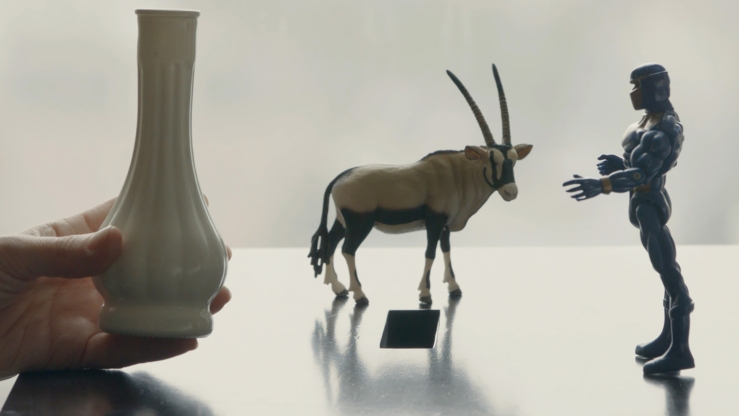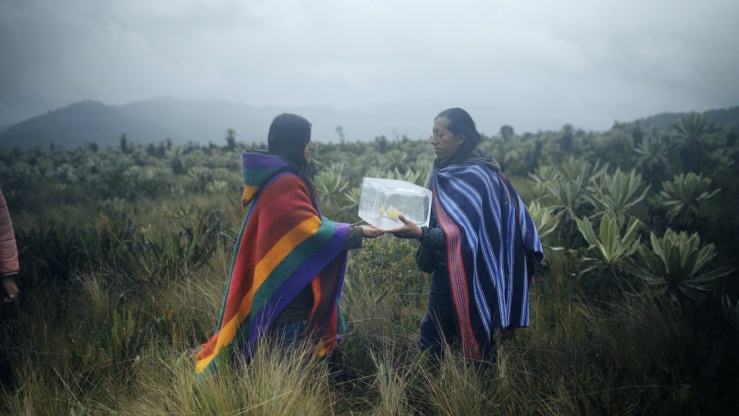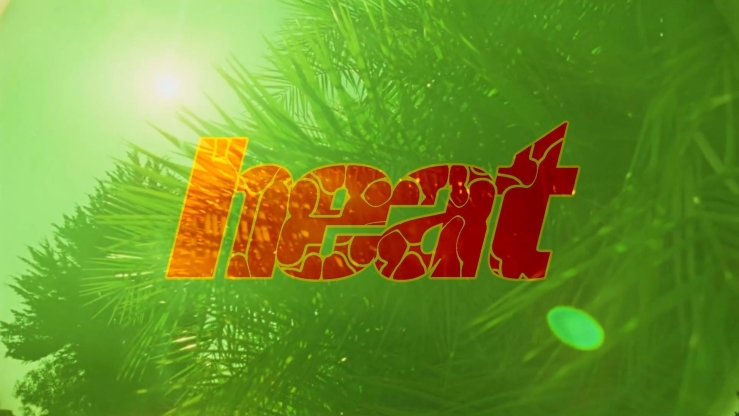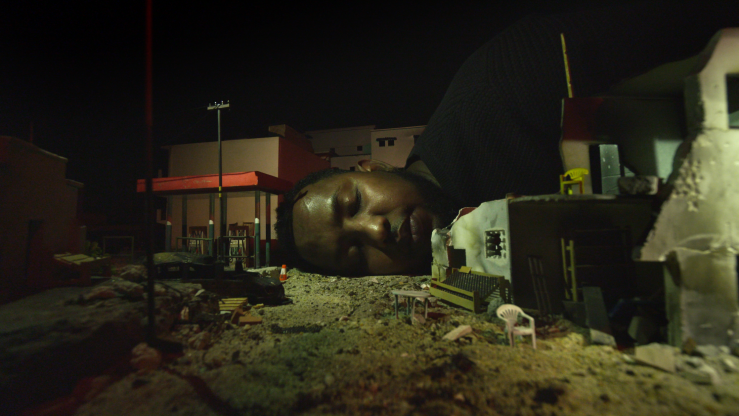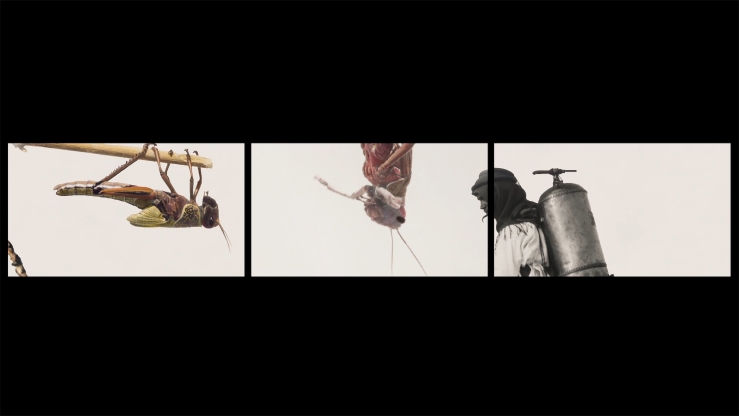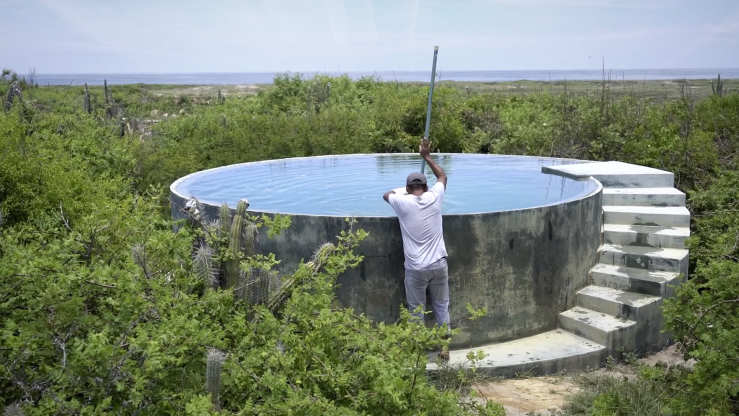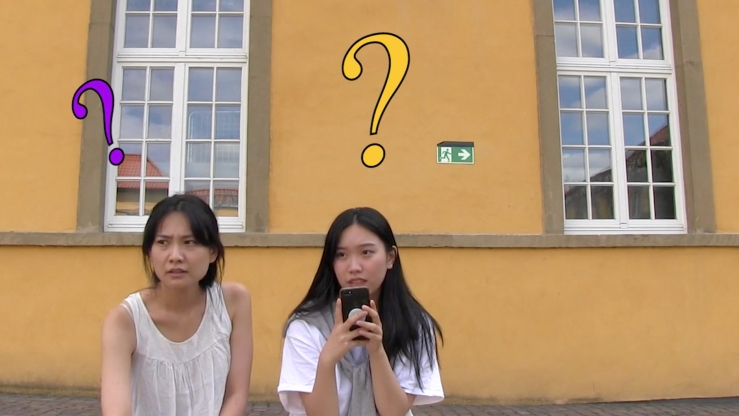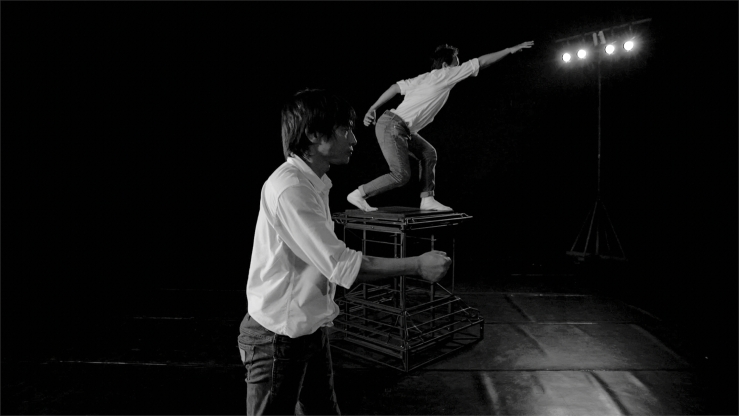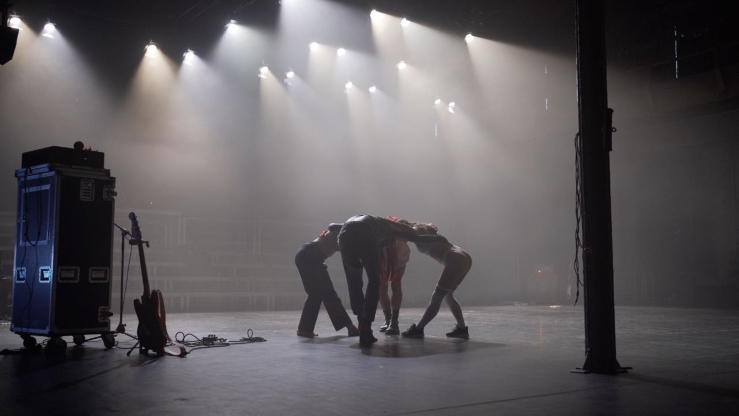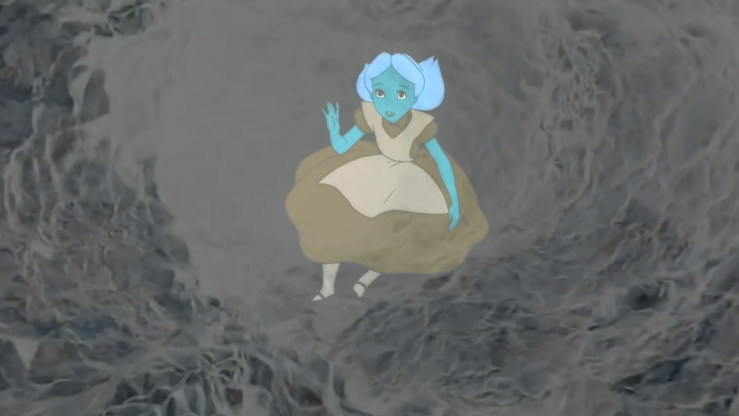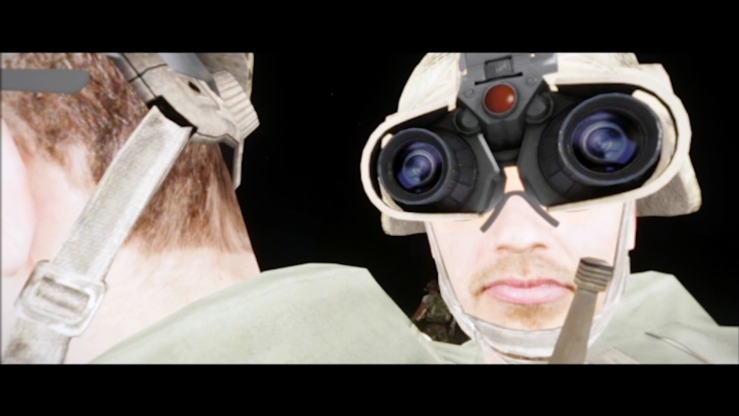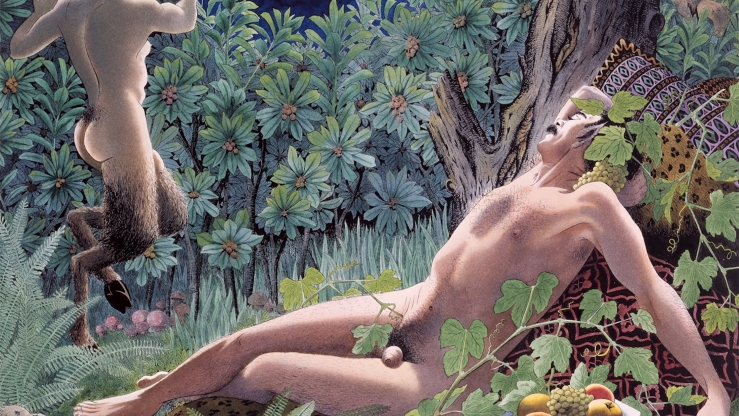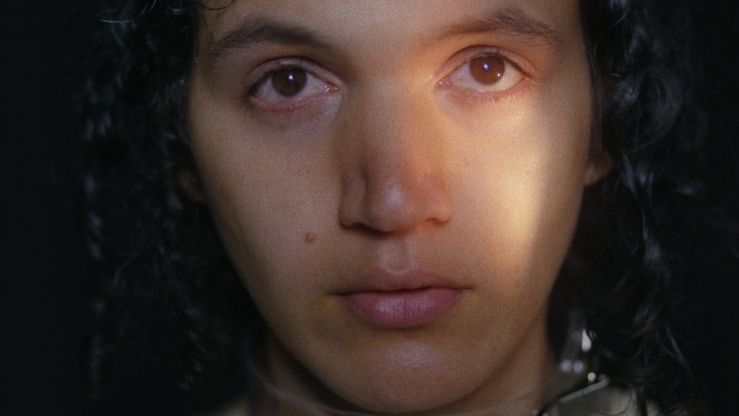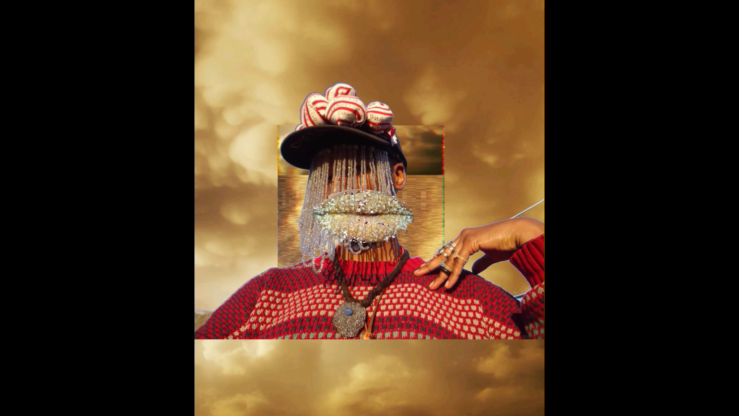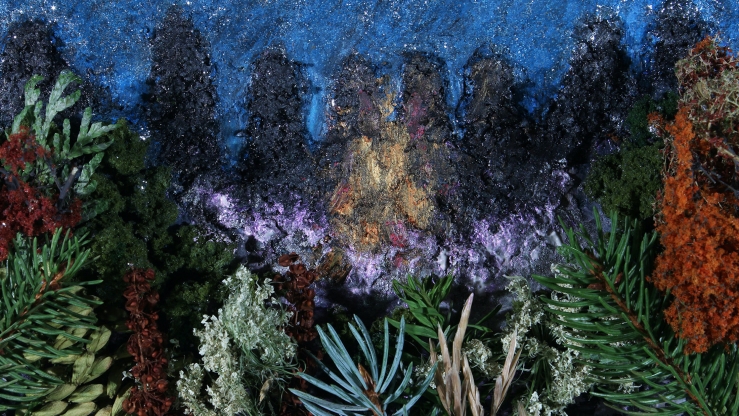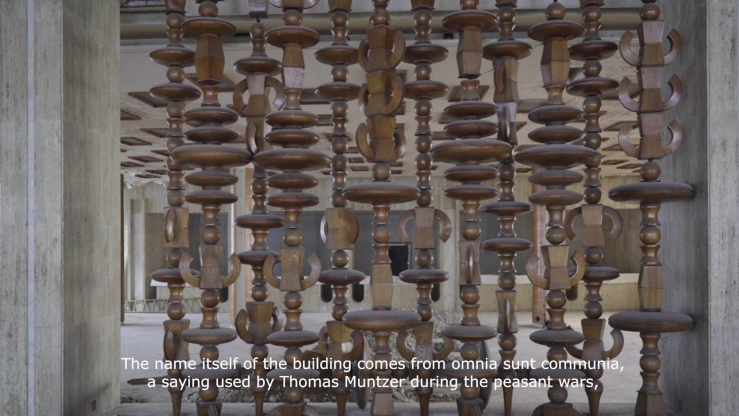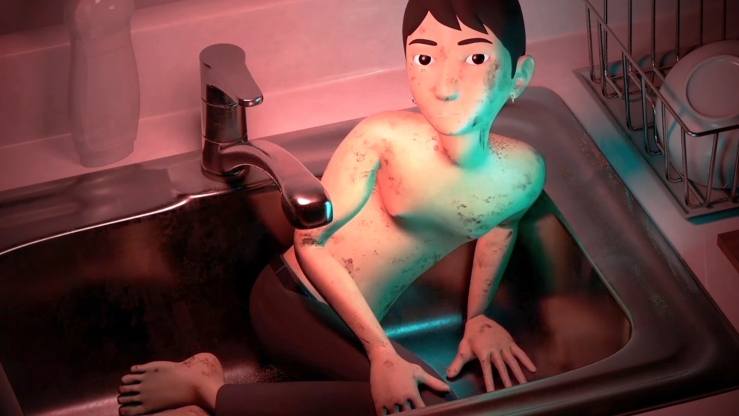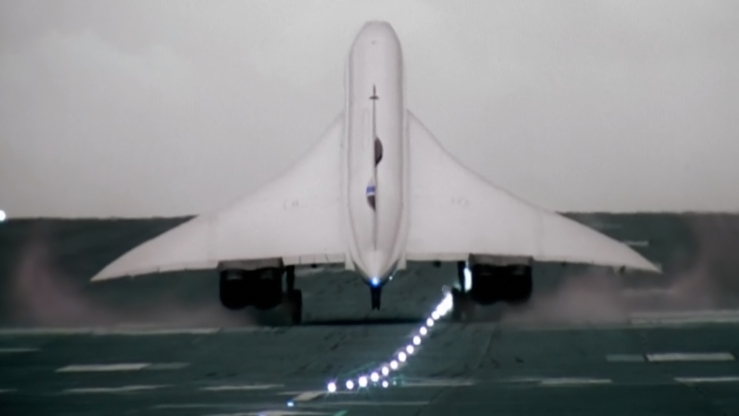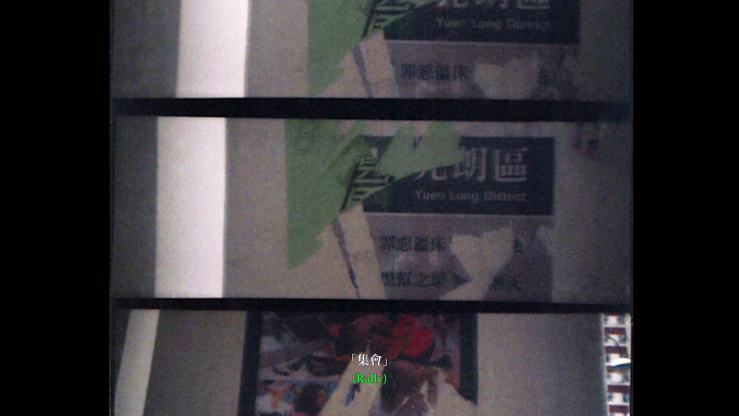Antonia Baehr &
Jule Flierl &
Isabell Spengler &
It opens up — a situation, a room, a sphere of sound. This is where the performers — Werner Hirsch (a.k.a. Antonia Baehr) and Jule Flierl — meet in a visual installation by Nadia Lauro, surrounded by a silently welcoming audience and a disembodied presence — the camera —, operated by Bernadette Paassen, directed by Isabell Spengler.
Intro: The circle of viewers opens, we who are in front of the screen are also addressed, are part of it. The wall becomes permeable.
Main part: A duet. Silent eye contact. Cue. The interpretation of a score from pop-up books with three-dimensional models of the body’s interior and of plants whose shapes, edges, transitions, and orifices are slowly captured by the interpreters’ fingertips and transformed into noises, sounds, melodies, rhythms, and bodily notations. They are getting under the skin, penetrating its layers, getting in touch with what usually remains hidden — the work of the organs and fluids inside the body, both human and vegetal, the transition from one physical state to another at the moment of digestion, breathing, photosynthesis: metabolization. Although the bodiesʼ positions never change throughout the duet, a peculiar dynamic develops, in which the interpretersʼ bodies, the rhythm of their murmurs, sounds, smacking, sighing, panting, their movements, the imagesʼ movements, and the books all seem to transform into one huge organism, where every single element interacts with everything else. This dynamic is substantially defined by the disembodied presence, which turns into the co-composer and vessel of this fantastic world through her play with proximity and distance, her rhythmic changes in perspective, her capturing, and letting go. Together with the sphere of sound, her images create a three-dimensional, breathing space that extends into the audience. Rigid boundaries — physical, medial, verbal, and mental — dissolve and enter into new alliances. The audiovisual duet generates no less than a new kind of language and, subsequently, new kinds of communication, perception, and reality.
Outro: The duet partners move weightlessly in space, re-interpretating a piece by Henry Purcell, somewhere between past and present, in limbo.
THE HEARING TROMBONE is a lot of things; to no small degree, it is an homage to queer icon and countertenor Klaus Nomi, who opened up new spaces with his vocal and physical expression and who, as one of the first public figures, died young in the course of the HIV-pandemic. (Tasja Langenbach)
Produced by make up productions in co-production with HAU Hebbel am Ufer Berlin with the support of Theaterhaus Berlin Mitte
Supported by Bureau Ritter / TANZPAKT RECONNECT, which is funded by the German Federal Government Commissioner for Culture and the Media as part of the NEUSTART KULTUR initiative.
Images: Antonia Baehr, Jule Flierl, Isabell Spengler, Die Hörposaune, 2022 © photos/video still: Anja Weber / Bernadette Paassen
About the artists
About the Work
Insights at Videonale X
